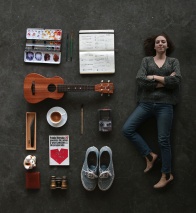What it does
The Ecco kettle is a sustainable and empowering alternative to usual household appliances. Easy to assemble, its components are easy to replace if broken. The mug and liter gauge encourages the user to only heat the water he needs, therefore saving power.
Your inspiration
In France, 20kg of electrical waste is thrown away every year per inhabitant, and 80% of these broken devices are discarded instead of being repaired. Facing this mess and our frenetic purchases of new devices, few alternatives exist. Looking around house appliances, repairing is often difficult, expensive, and sometimes dangerous for an amateur trying to replace components by himself. Plus, these devices are extremely power hungry, without us even noticing it. Starting from the most usual objects, I chose to think a new way of consuming household appliances, starting with the kettle, pervasive in our european homes.
How it works
The kettle principle is simple : a resistance heats up water when the circuit is closed, until the water boils. Ecco is built around an axis : its key components (base, power bloc and resistance) are manually screwed under the tank and marked with visual indications. When screwing the power bloc, the resistance gets stuck against the inside tank, ready to function. The components cannot be assembled in the wrong order, making the object easy to understand and to repair if a component is damaged. The kettle gauge, going up to 1.2 liters, is marked in both mugs, pan and liters to encourage the user to only heat the water he needs. The double-walled tank prevents the risks of leaking and allows the kettle to be hold like a bottle or a carafe.
Design process
How to make small household appliances long lasting and empowering towards our power consumption ? Eco-conception is a good start, but we also have to guide our user. I started by dismantling several types of kettles in order to understand their anatomy : I found a great number of components that were hard to identify for an amateur. The main brake to the repair of a product like a kettle is the lack of confidence, but also the potential risk of making a mistake while putting it back together. That's why I managed to divide each key element to turn them into blocs, simple to assemble like Lego bricks. Coulours and engraved informations are a way to reassure and give confidence. I committed to a very minimal shape to give the kettle an opposite stance to what can be found on the market : no handle, its thin enough to be hold like a bottle, a wide beak to allow lazy ones to fill it up with the lid on, and a double walled tank keeping the heat longer.
How it is different
Kettles are everywhere, however their use gives rise to issues : too much water is heated compared to our immediate need, the minimum on the gauge being too important already, and its life expectancy is about 2 years for the cheapest models. The market is overfilled with crazy products featuring cosmetic functionalities (LED lighting, distance programming...), and their shape doesn't serve the function anymore but decoration. Ecco's tight base allows to heat the kettle with a smaller amount of water : 250mL, which is the content of one mug. The heat loss is prevented thanks to the double-walled tank, making up for the small size of the flat resistance stuck under the inside stainless steel tank. If a breakdown occurs, just take the component out and replace it with a new one. Thanks to its sustainable conception, Ecco allows to make both material and power savings, making its user more conscious.
Future plans
Though it was thought for home use, the Ecco kettle is an economic alternative for infrastructures consuming a lot of appliances, such as hotels, hospitals... etc. Different coulours and materials can be proposed to adapt the product to different environments. The after-sales service can be done online or in shops, costing the broken component : this way, we can be sure of their recycling in exchange of a new component. In the future, Ecco could be adapted to an entire family of home devices (vacuum cleaner, heater, dish-washer...).



Share this page on
LinkedIn
Facebook
Twitter